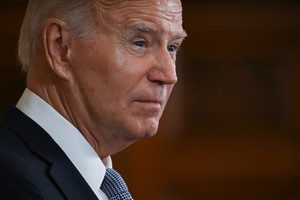A Former New York Times Editor Just Called Out its Bias and Effectively Endorsed the AllSides Approach

“Maybe if the [New York] Times would put more trust again in the intelligence and decency of Americans, more Americans would again trust the Times,” wrote James Bennet, a former editorial page editor for the Times, this week in The Economist (Lean Left bias).
To refresh everyone’s memory, Bennet was forced out of the Times in 2020 over his publishing of an op-ed by Sen. Tom Cotton (R-OK). At the time, members of the Times’ writers union said publishing the opinion — which called for U.S. troops to quell protests after George Floyd’s murder — was “a clear threat to the health and safety of the journalists we represent.”
As Bennet described, Sen. Cotton likely had the ear of the President and was describing a perspective that many had at the time. Bennet sees the rejection of this article as an example of the New York Times’ shift from a “liberal bias to illiberal bias, from an inclination to favour one side of the national debate to an impulse to shut debate down altogether.”
And when you shut down debate, you don’t trust Americans to think for themselves. That’s the issue with American media in a nutshell. When journalists distrust Americans, Americans distrust journalists.
Trust in U.S. media continues to fall, and clearly, something isn’t working. At AllSides, we agree with Bennet that major outlets like the Times seem “afraid to trust readers,” and that’s at the core of the problem.
There is a tendency among journalists today to shield readers from “harmful” subjects or conspiratorial narratives. But doing that, as Bennet says, denies their basic right to a free information flow, fuels polarization that harms the quality of our democratic republic, and foments distrust in journalistic institutions, as the public believes journalists aren't trusting them enough to give them the full view.
Journalists should present their audience with viewpoints representing all the different sides of an issue – even when readers might disagree with those views or see them as hateful and harmful. Here’s why.
A journalist’s job is never to “protect” readers from controversial information. That position misunderstands the fundamental objective of journalism: to provide the public with the information needed to make decisions.
Without the full spread of facts and viewpoints, people aren’t set up to fully participate in their communities and engage with political causes, and democracy suffers as a result.
The best cure for nonsense is sunlight. Ignoring misinformation only allows it to fester and strengthen. Research from Northwestern University suggests that learning “how to critically evaluate misleading statements can improve understanding” among readers. And a study from Duke University on vaccine hesitancy found that the best way to reduce hesitancy is through “effective, respectful communication and trust-building.”
Fake news will always exist, so journalists should present it in context for readers.
Ignoring the full range of perspectives on an issue is an affront to journalistic ethics. When readers inevitably encounter those views elsewhere, they’ll wonder why the first source didn’t mention it. And when readers see journalists at major news outlets opposing the publication of diverse viewpoints, they feel looked down upon by these institutions – like they are being coddled and treated as children rather than trusted as adults with agency. Or worse, they feel those sources are hiding information to manipulate them towards the agenda(s) of the rich and powerful.
No wonder so many Americans are turning to news adjacent sources like social media and the talking heads of opinion and entertainment talk shows. If there is no trustworthy hard news anymore, why waste your time or money on establishment media.
At a time when U.S. trust in media is at a low point, members of the media must start trusting readers’ ability to digest controversial information — and yes, even risk readers coming to conclusions journalists themselves don’t agree with.
As Bennet correctly points out, the Times did publish Cotton’s op-ed, and there’s nothing to suggest anyone’s “health and safety” was compromised as a result. But the “health” of the Times’s public trust undoubtedly suffered.
We’re glad to see Bennet and The Economist publish an argument that so neatly aligns with our mission. We hope it foreshadows a wider recognition of this issue in journalism and efforts to correct it.
John Gable is the CEO and co-founder of AllSides. He has a Lean Right bias.
This blog was co-written by Gable, Editor-in-chief Henry A. Brechter (Center bias), Content Designer and News Editor Joseph Ratliff (Lean Left bias), and Director of Marketing and Bias Ratings Julie Mastrine (Lean Right bias).

May 9th, 2024

May 7th, 2024

May 7th, 2024